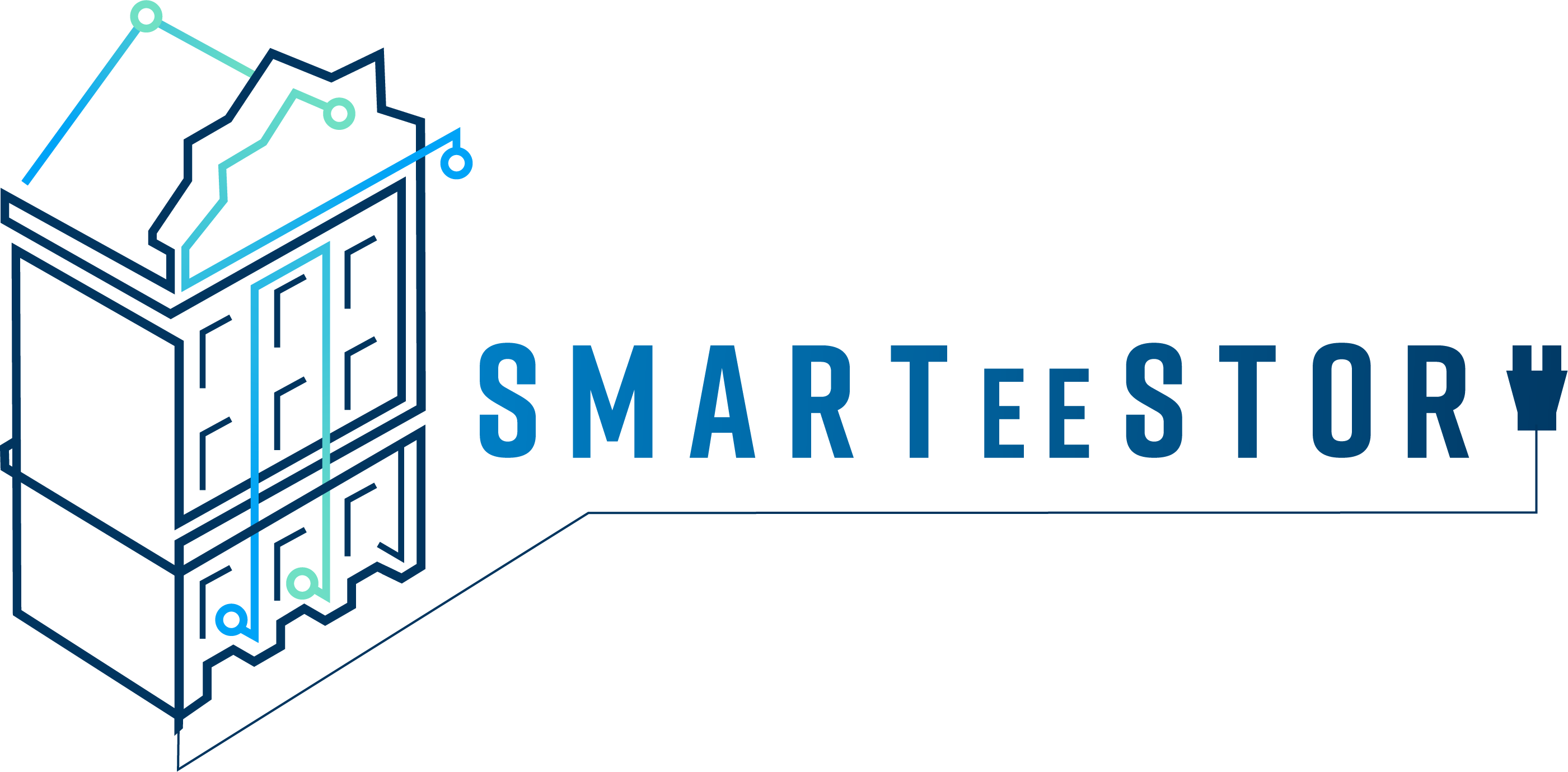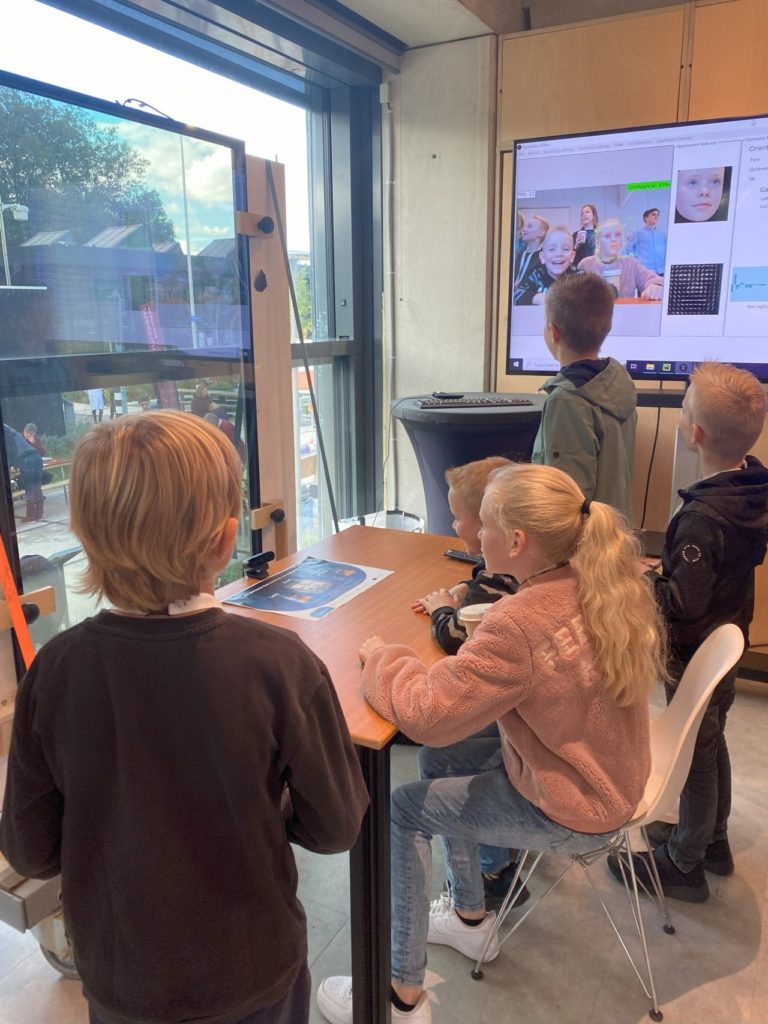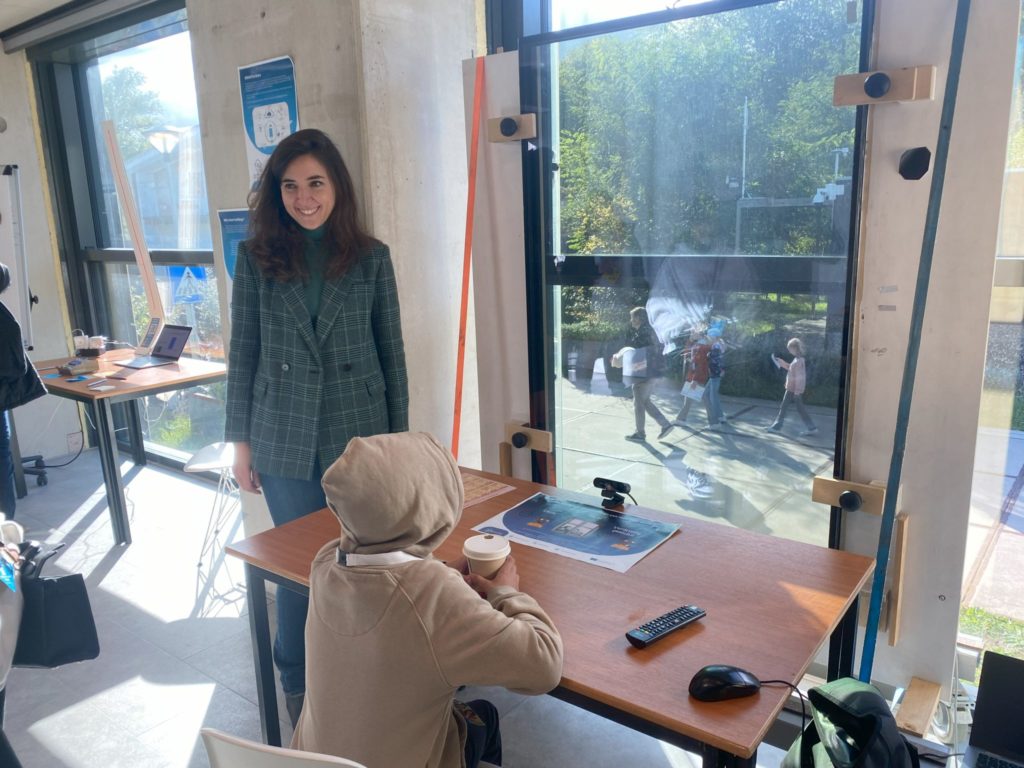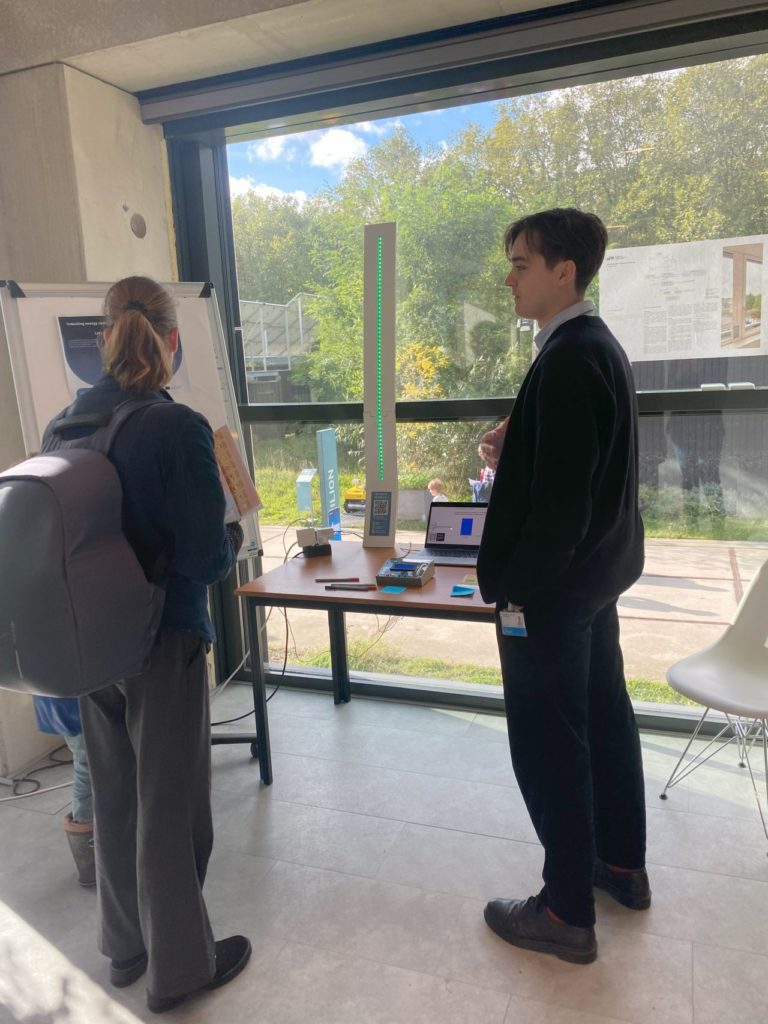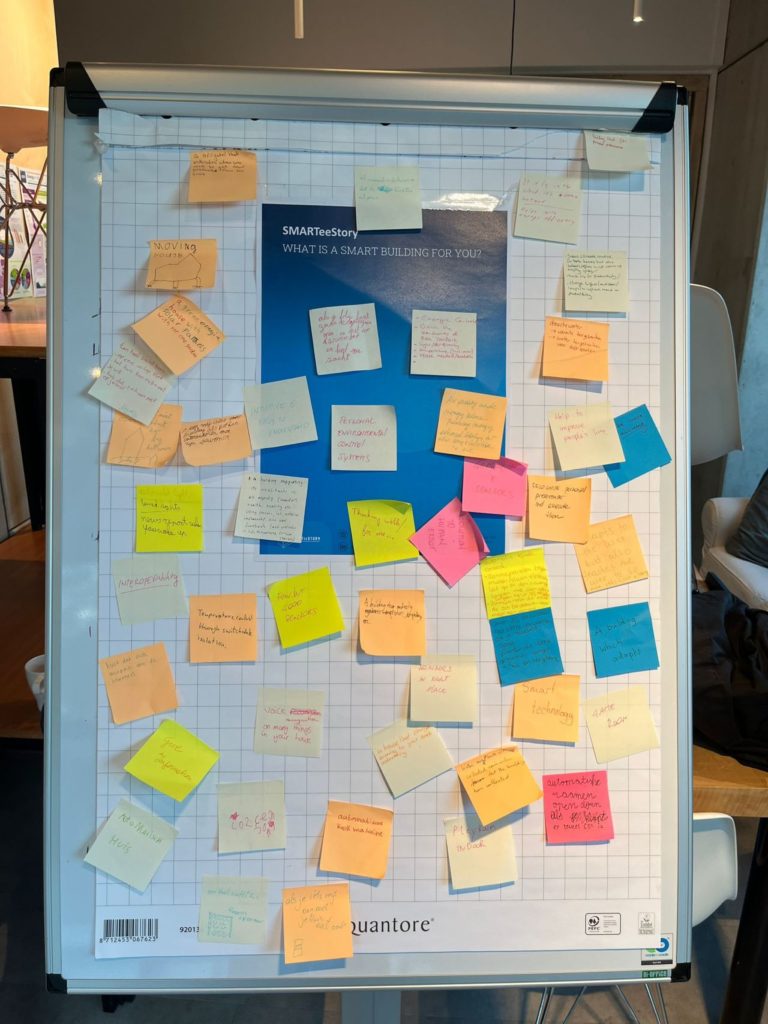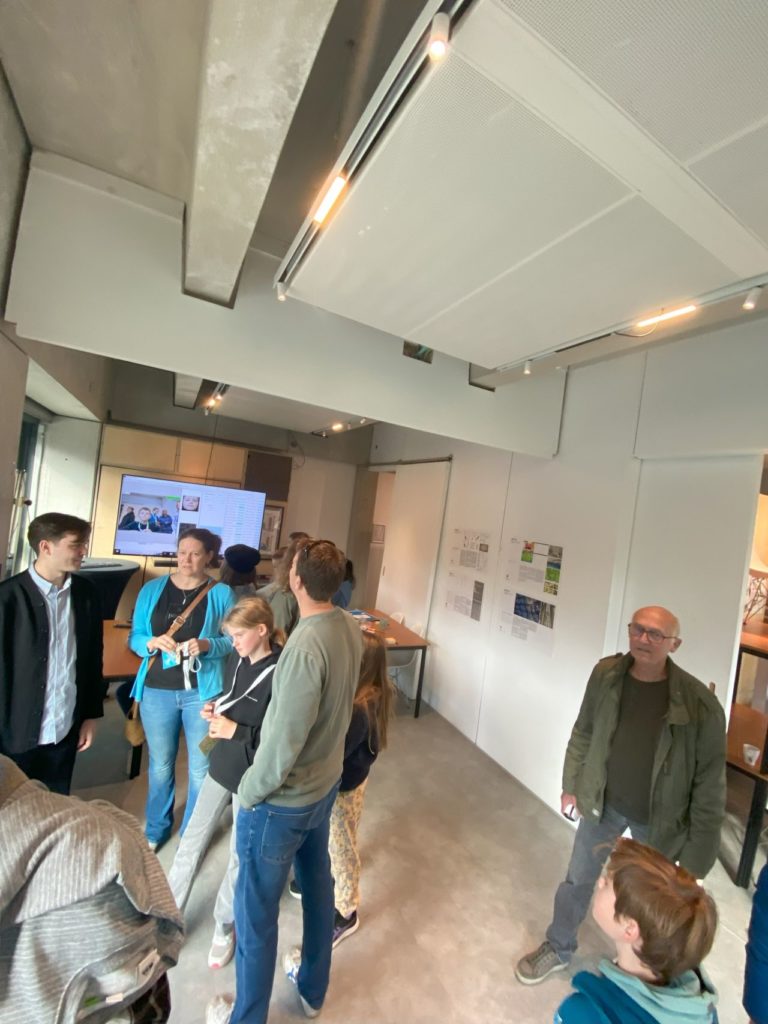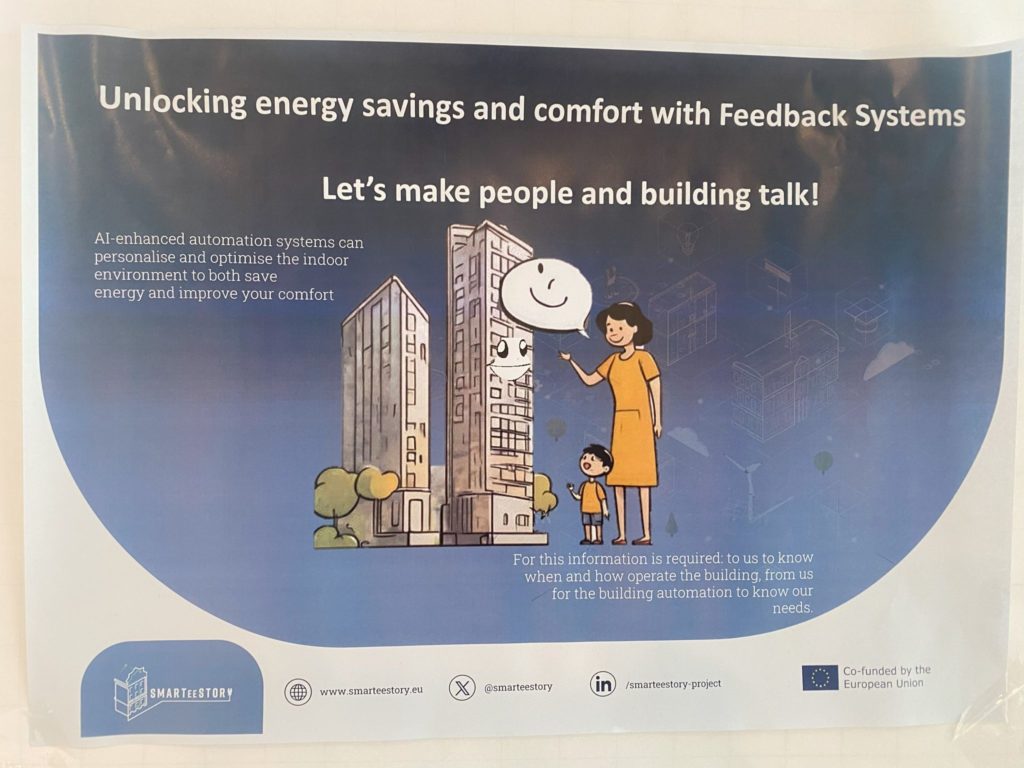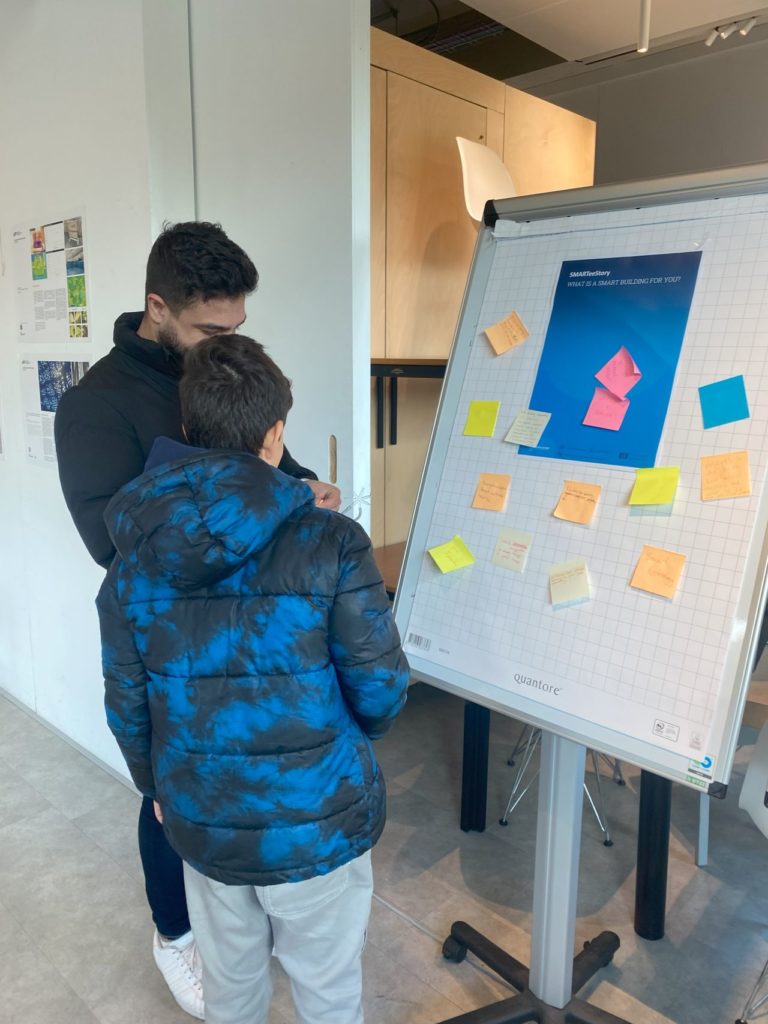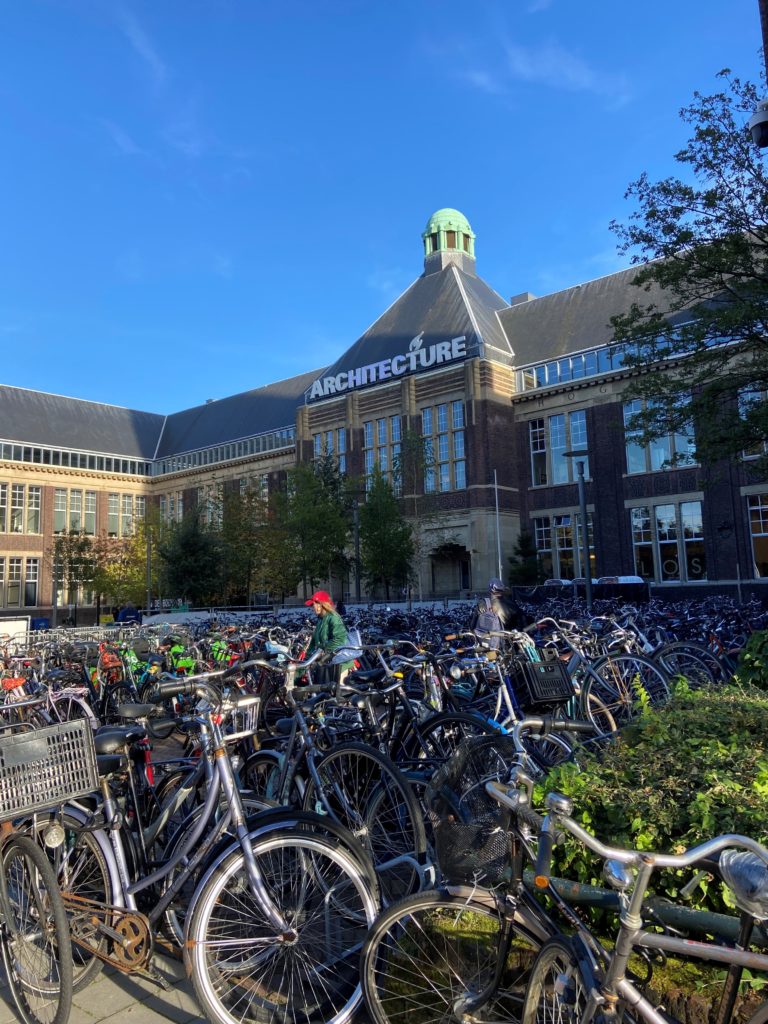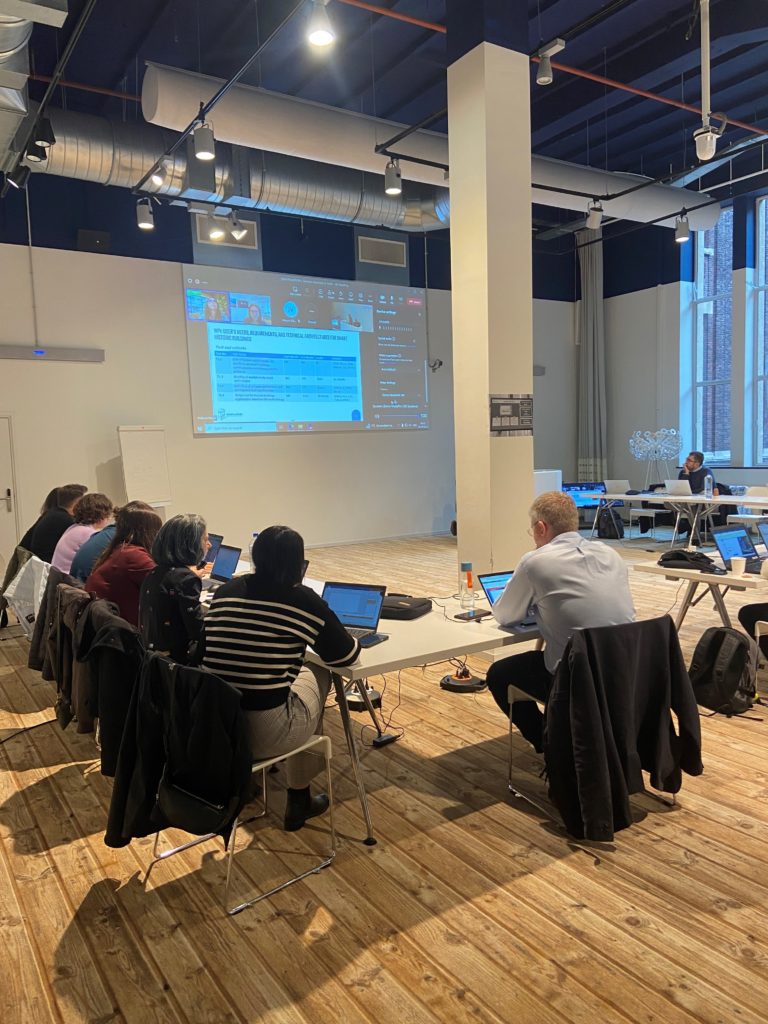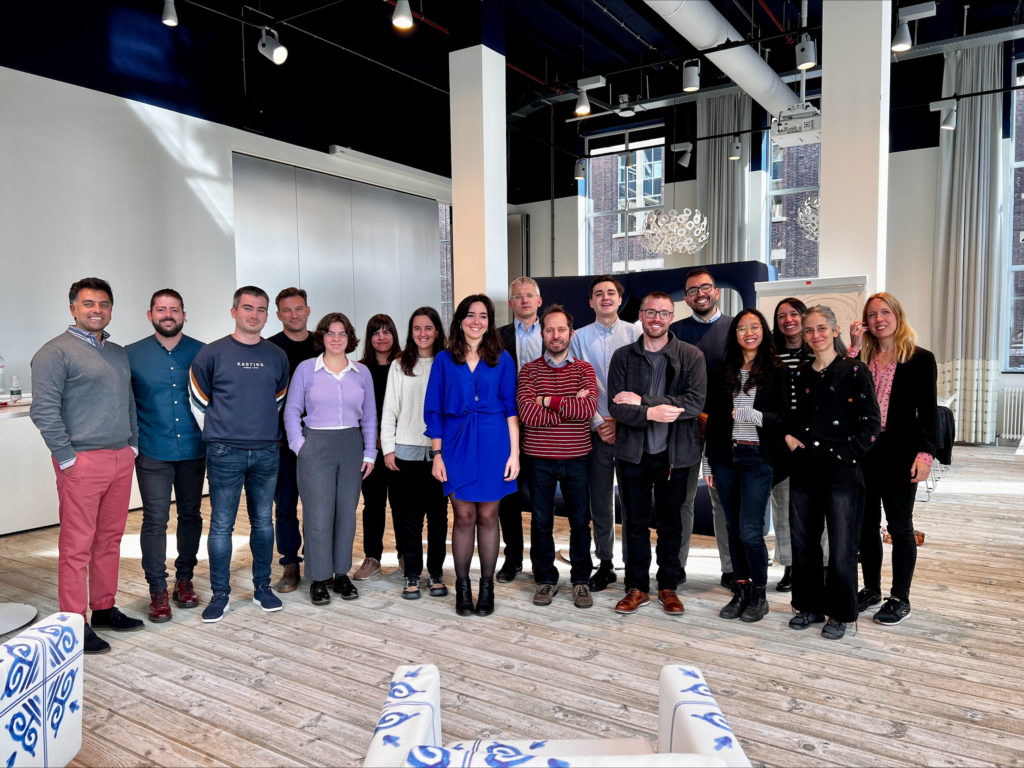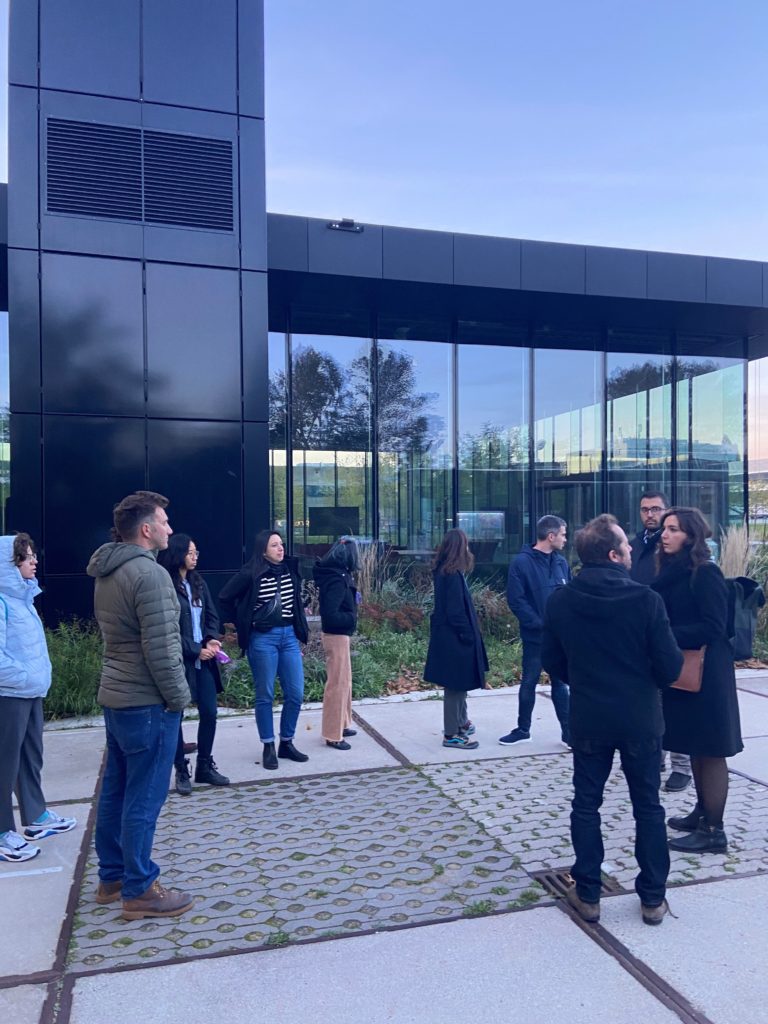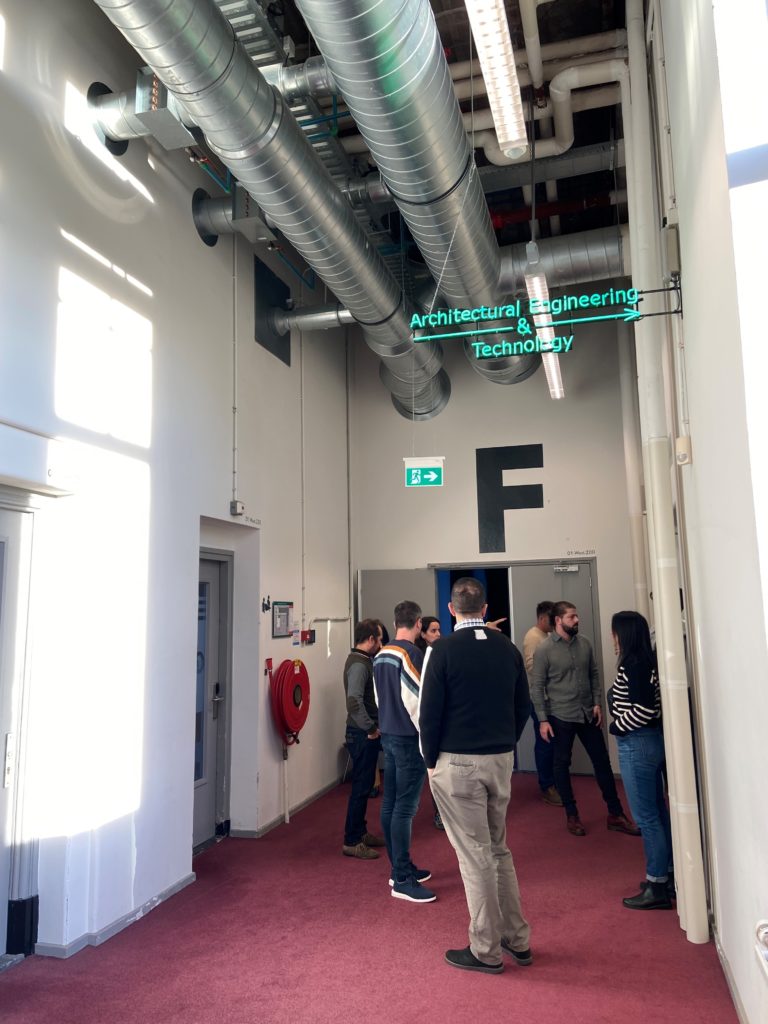TU Delft presents building comfort and occupant preference research at CLIMA
As part of the SMARTeeSTORY project, TU Delft researchers shared two innovative studies at the REHVA HVAC World Congress CLIMA, Europe’s leading event in heating, ventilation, and air conditioning (HVAC).
Pedro de la Barra Luegmayer and Pablo Martinez Alcaraz, PhD candidates at TU Delft, presented the latest results of their research. The titles of their presentations were:
- Pablo Martinez Alcaraz: Does One Size Fit All? A Bayesian Data-Mining Approach to Thermal Comfort in Office Spaces
- Pedro de la Barra Luegmayer: Evaluating Occupant Preferences with Building Control Interfaces: Towards Personalized Interaction Strategies
Advancing Energy Efficiency in Historic Buildings
Their research is rooted in TU Delft’s own Faculty of Architecture building, which is being transformed through SMARTeeSTORY. The team is integrating smart controls for blinds, heating, ventilation, air conditioning (HVAC), and lighting. Their main goal in the project is the understanding of occupant requirements for building controls. With these innovations, they aim to optimise energy use while enhancing occupant comfort and acceptance with automated building services.
Learn more about the work carried out at the Faculty of Architecture at TU Delft here.
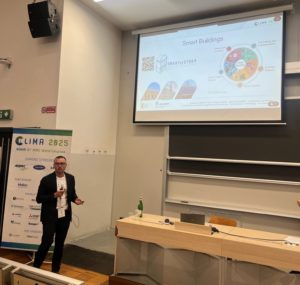
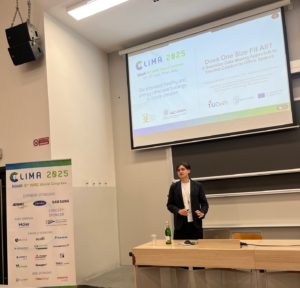
At TU Delft’s Faculty of Architecture and the Built Environment, the SMARTeeSTORY team is advancing the smart monitoring and control systems towards a more responsive and user-centered approach.
The team undertook meticulous planning to ensure smooth implementation. They completed an executive design phase, conducted pre-monitoring preparations, and secured all necessary permissions. These steps were essential for minimizing disruption to occupants and faculty while allowing for effective system integration.
Installation efforts are progressing steadily and are expected to wrap up by the end of March 2025, with significant milestones already achieved:
Achievements and Progress
• Successful Installations: TERA installations have been completed, with device installations from Schneider Electric underway.
• Collaboration and Coordination: Multiple stakeholders worked together to ensure seamless integration.
• Ongoing Documentation: The communication team continues to share insights through articles and updates, contributing to knowledge dissemination.
By prioritizing transparency and knowledge sharing, TU Delft’s implementation of SMARTeeSTORY solutions serves as a valuable reference for other institutions looking to enhance their energy efficiency while maintaining an optimal office environment.
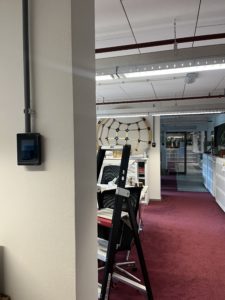
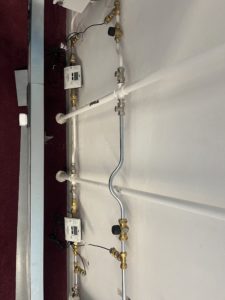
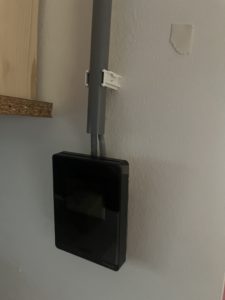
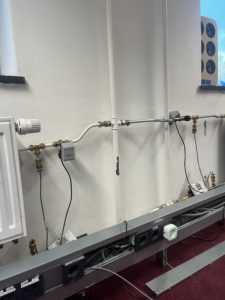
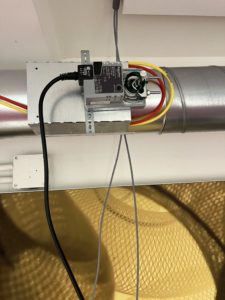
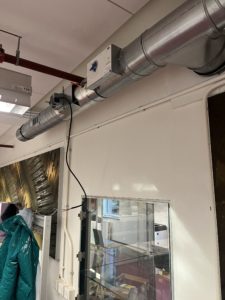
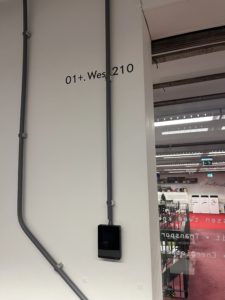
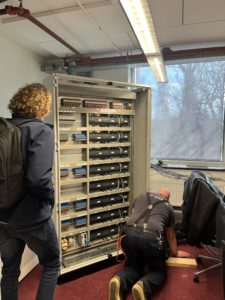
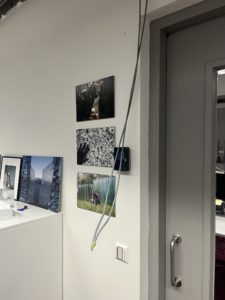
Pellini is an Italian company specialising in shading systems designed for heat, light and glare control. For the SMARTeeSTORY project, it has supplied roller shades for demo sites together with a model-based control logic with a reduced amount of room sensors, which are unnecessary or just required at commissioning stage. The idea behind the automation is to perform, on a micro-scale, live simulations being able to quantify daylighting contribution, glare probability, solar protection, visual contact and user intervention.
To be at the forefront of technology in the field of automation of technical blinds, Pellini has invested in in-house engineering and production departments of mechanical and electronic components with the aim of combining tailor-made electronic solutions and motorisation with advanced shading system hardware. This integrated approach has enabled the company’s solutions to be adopted in challenging international buildings as well as in other EU-co-funded projects, such as:
- ENERGYMATCHING, aimed at developing and demonstrating a set of building skin solutions conceived to provide a multiple answer in terms of energy harvesting, adaptability, enhanced aesthetics and multifunctionality of the active skin solutions;
- MEZeroE (standing for “measuring envelope products and systems contributing to the next generation of healthy nearly-zero-energy buildings”), whose main vision is to create buildings that harmonise with their surroundings, prioritise occupant well-being and minimise environmental impact.
For Pellini, talking about personalisation in shading systems does not only mean developing customised models that meet clients’ specific requirements: due to the multiplicity of situations in which they operate, shading systems must adapt to conditions that cannot be forecast in advance, based on the way user’s needs may change over the lifetime of a building. Inside the company, the “goldfish story” is a popular illustration in this regard.
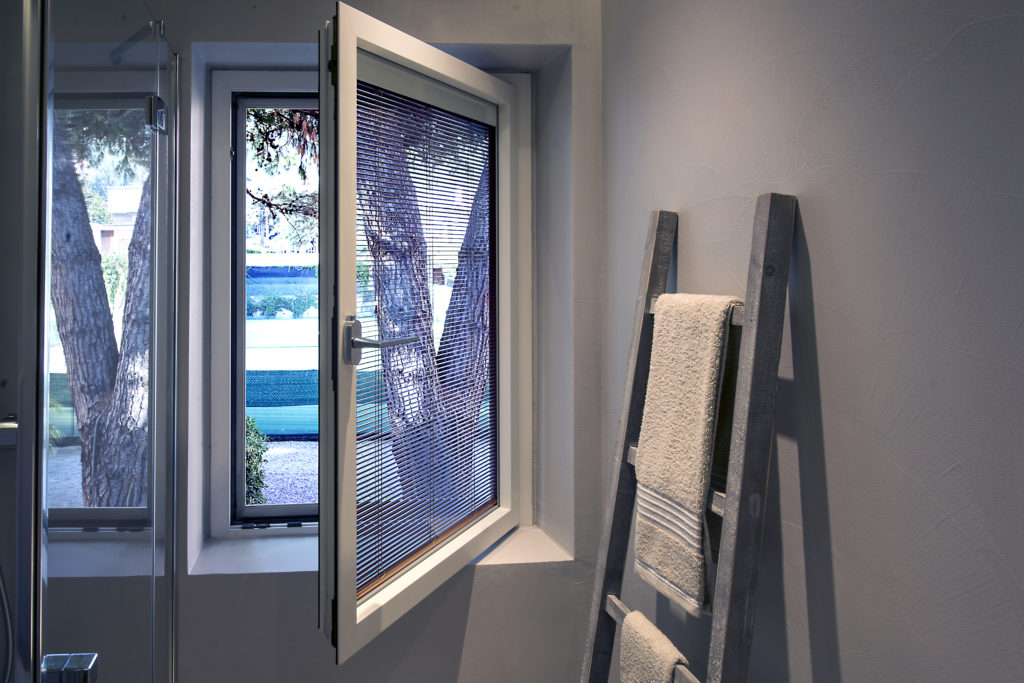
The goldfish theorem
In an apartment in France, there were five windows equipped with a shading system. Usually, the objective is to have blinds working in unison, and this was also the case in the flat, with the exception of one blind that remained closed to protect a goldfish whose bowl was placed below. In the logic of the shading function of that house, the fish was an important factor, but it was also something that could not have been predicted in advance, and which required a personalised approach when it comes to automation.
For Pellini it is fundamental that systems be as flexible as possible, to respond to issues of personalisation that are not just a matter of heat and light gains, but also of real life as a whole.
Author: Sergio Semeraro, Marketing Manager of Pellini SpA
Cover photo: Pellini roller blind systems connected with BMS
Photo Credits: Pellini
On 25-27 July 2024, Alessandra Luna-Navarro, Pedro de la Barra, and Pablo Martinez Alcaraz, from the Technical university of Delft (TU Delft) presented SMARTeeSTORY findings at the International Building Physics Conference (IBPC) 2024.
Hosted at Toronto Metropolitan University, the IBPC conference brought together researchers, practitioners, educators, and students from the building science and physics sectors worldwide.
Showcasing Results Advancing Smart Building Technologies and Energy Efficiency
Alessandra Luna-Navarro showcased their work “Impact of dynamic facades on smart readiness indicator and user satisfaction”. Alongside SMARTeeSTORY coordinator RINA, TU Delft researchers presented the role of dynamic façades in enhancing user satisfaction, their second contribution on the topic. Dynamic façades, equipped with smart-ready services such as dynamic shading devices and smart controls for windows, lights, or heating, aim to boost energy efficiency. The Smart Readiness Indicator (SRI), introduced by the European Union in 2018, measures a building’s ability to support these smart services to improve energy efficiency, meet occupant needs, and respond to grid signals. The TU Delft and RINA team used the SMARTeeSTORY demosite in Delft, Netherlands, as a case study to analyse how smart technologies can enhance energy efficiency, energy flexibility, and user comfort.
Pablo Martinez Alcaraz presented his work "Personalized Building Controls based on Individual Thermal Preferences for Energy Efficiency and Thermal Comfort". This study, conducted with colleagues from the TU Delft and the University of California Berkeley focuses on identifying occupants' thermal preferences in shared spaces and developing Bayesian thermal comfort models to create occupant-centric control logic that optimizes personalized comfort and assesses energy performance.
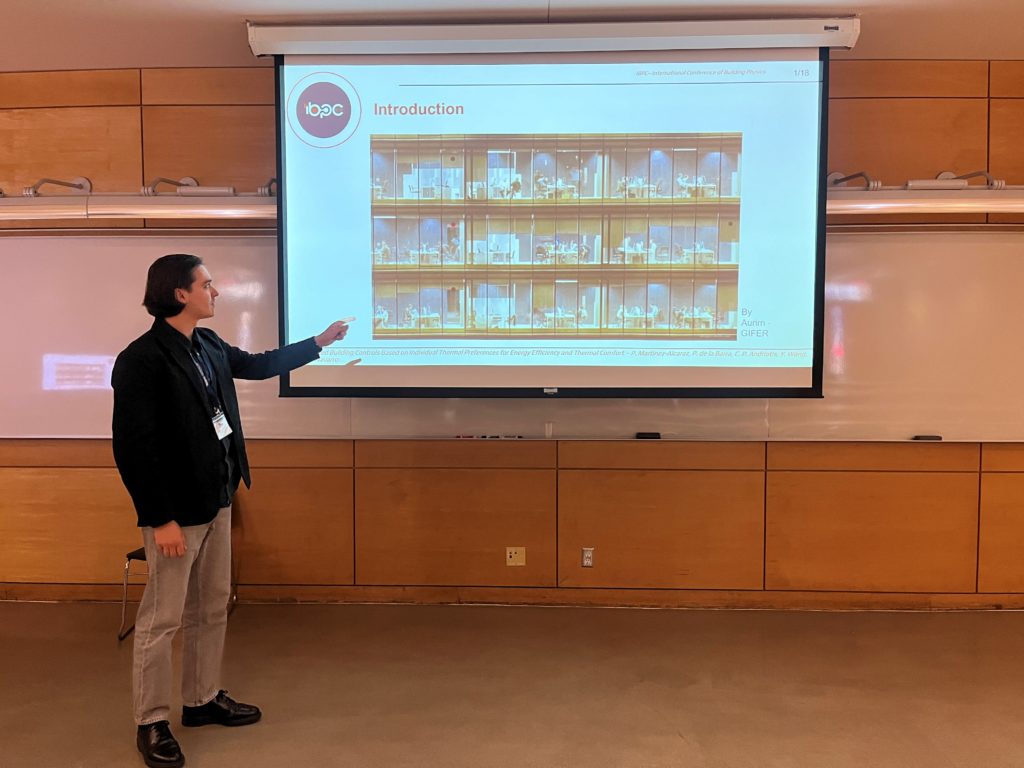
Pedro de la Barra presented their work on “Identification of interaction strategies by clustering occupants in buildings.” TU Delft researchers developed a framework to identify causes of (dis)satisfaction with Indoor Environmental Quality (IEQ) conditions and personal and automated control strategies implemented in the Demo sites of Delft and Riga. Assessing those satisfaction items is key for the implementation of the SMARTeeSTORY strategy.
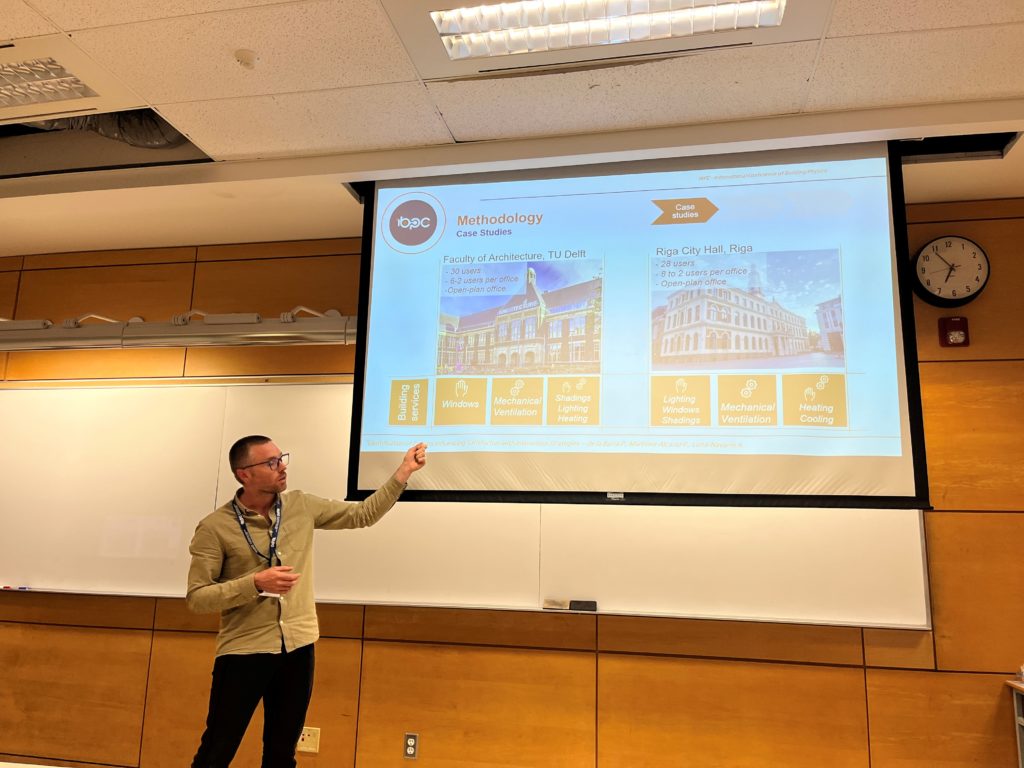
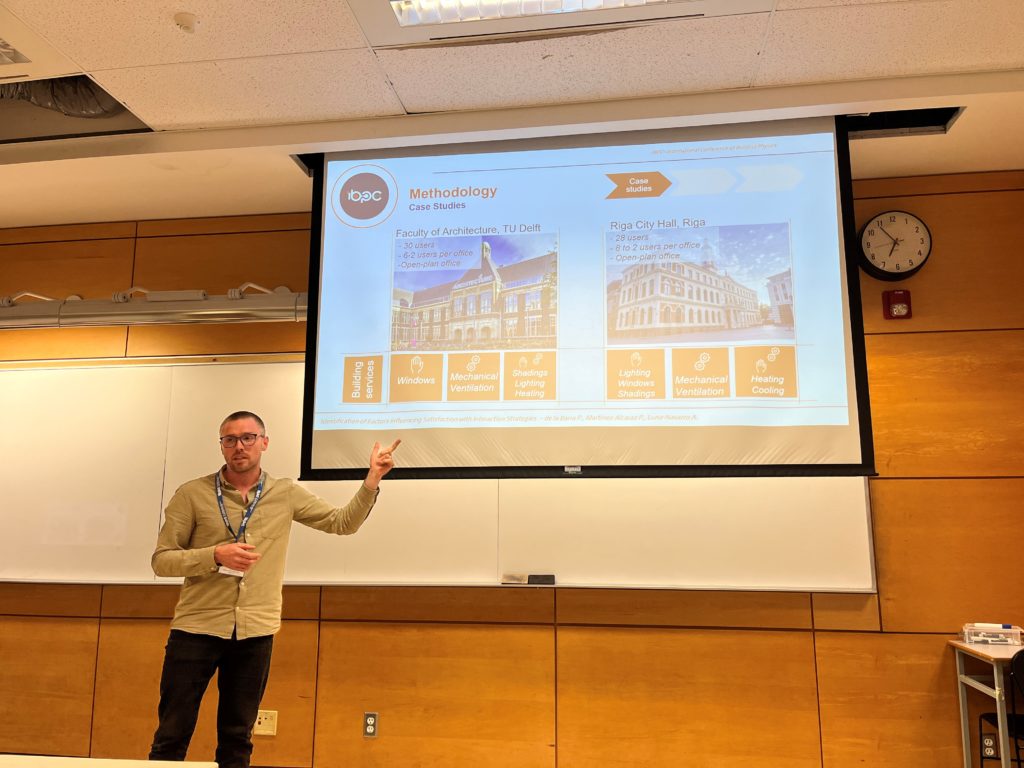
Pedro de la Barra, TU Delft, at the IBPC 2024 conference
The proceedings from IBPC 2024 will be published soon, providing detailed insights into the SMARTeeSTORY's contributions. The participation of our project partners in such an international conference underscores the project's commitment to advancing smart building technologies and energy efficiency, contributing valuable knowledge to the global community.
A significant portion of the historic building that houses the Faculty of Architecture and the Built Environment at TU Delft - one of our three demonstrators - is currently undergoing renovations. The area being renovated spans two floors, featuring several open spaces and individual offices. Approximately 40 researchers work in this area.
The renovation plan includes the installation of over 150 sensors (see Figure below). We are pleased to announce that the first batch of sensors, provided by TERA, has arrived for the demo. These sensors will measure indoor environmental quality (IEQ) conditions at desk level, including air temperature, air humidity, and illuminance. These metrics are crucial for assessing occupant comfort. The strategic placement of these sensors will enhance our ability to implement advanced personal comfort models using machine learning techniques.
The remaining sensors, supplied by Schneider Electric, are en route to Delft. These will monitor occupant behavior and help us develop our own Building Management System (BMS). The final installation is scheduled to begin at the end of June 2024, in preparation for summer monitoring and before the SMARTeeSTORY solution is implemented.
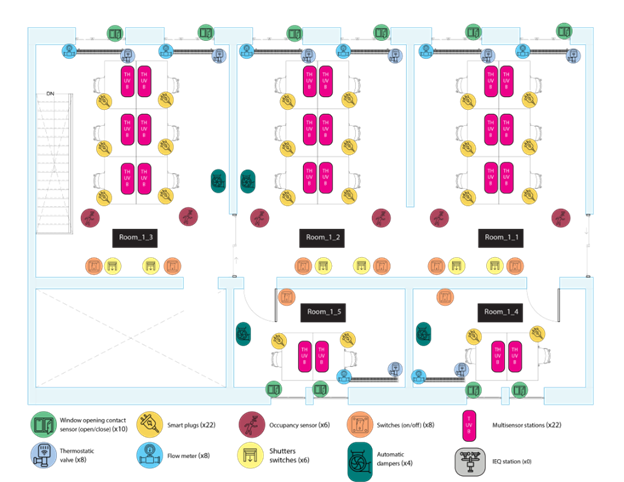
On 22 October, TU Delft invited families and children to experience the project’s activities first-hand at the University’s annual Science Day 2023. During this free family event, various departments open their doors to welcome children with their parents to learn more about science and technology. The SMARTeeSTORY partners organized several interactive activities to share the project’s and other ideas on human-building interaction.
'Smartification' always sounds a bit like anything and everything, right? Therefore, one of the activities was to ask visitors to describe what they think a smart building actually is. The answers were intriguing, ranging from "moving houses", "climate resilience" and "healthy indoor climate" to "soft" homes - all of which are indeed smart ideas!
Seeing all the people, children and families having a great time while learning about the SMARTeeSTORY research has been the best reward one could imagine. And activities like these really illustrate what is meant by technical terms like “smart buildings” or “user interaction” and how we can use smart appliances to improve our living environments in the future, while at the same time saving energy.
Thank you to the Green Village at TU Delft and the TU Delft Science Centre for hosting and helping us! Thanks to eyrise® B.V. for the collaboration through Face2Face and especially thanks to the SMARTeeSTORY project partners on site, Alessandra Luna Navarro, Pedro Pablo de la Barra Luegmayer and Pablo Martínez Alcaraz, for organising the event.
On 17 and 18 October 2023, the SMARTeeSTORY project partners met at the Delft University of Technology for their first General Assembly.
The meeting kicked off on 17 October with a site visit to the University building hosting the Faculty of Architecture and the Built Environment. There, the partners learned about the special history of the building as well as its specific challenges with respect to energy management. Originally, this monument from the early 20th century was supposed to be used for chemical engineering purposes, which is why, until this day, it has a chimney and various vents on the façade. Vents are also a common sight throughout the inside of the building, which are nowadays used for the building’s ventilation. However, the building was never used for its originally intended purpose – instead, it served as the University’s main building for many years. In 2008, the ‘Faculty of Architecture and the Built Environment’ then moved into its halls, after their own building was completely destroyed in a fire. The project partners visited the original site of the faculty’s building as well. Over the years, it has been turned into the “Green Village”, a living lab for sustainable innovations in home, work and living environments, where also some of the SMARTeeSTORY implementations will be tested soon.
On 18 October, the project partners gathered inside the Delft demonstrator to hold their General Assembly, discussing project progress, upcoming activities as well as challenges. Spending 8 hours inside the building gave the partners the unique chance to experience its energy-related challenges firsthand: Due to the high ceilings, the numerous (but impressive!) windows, and the overall poor insulation (amongst other things…), the rather chilly October temperatures have made themselves felt in the meeting room as well. A situation that the students and university staff are experiencing on a daily basis and which SMARTeeSTORY hopes to be able to improve in the coming years.
Subscribe to our newsletter

